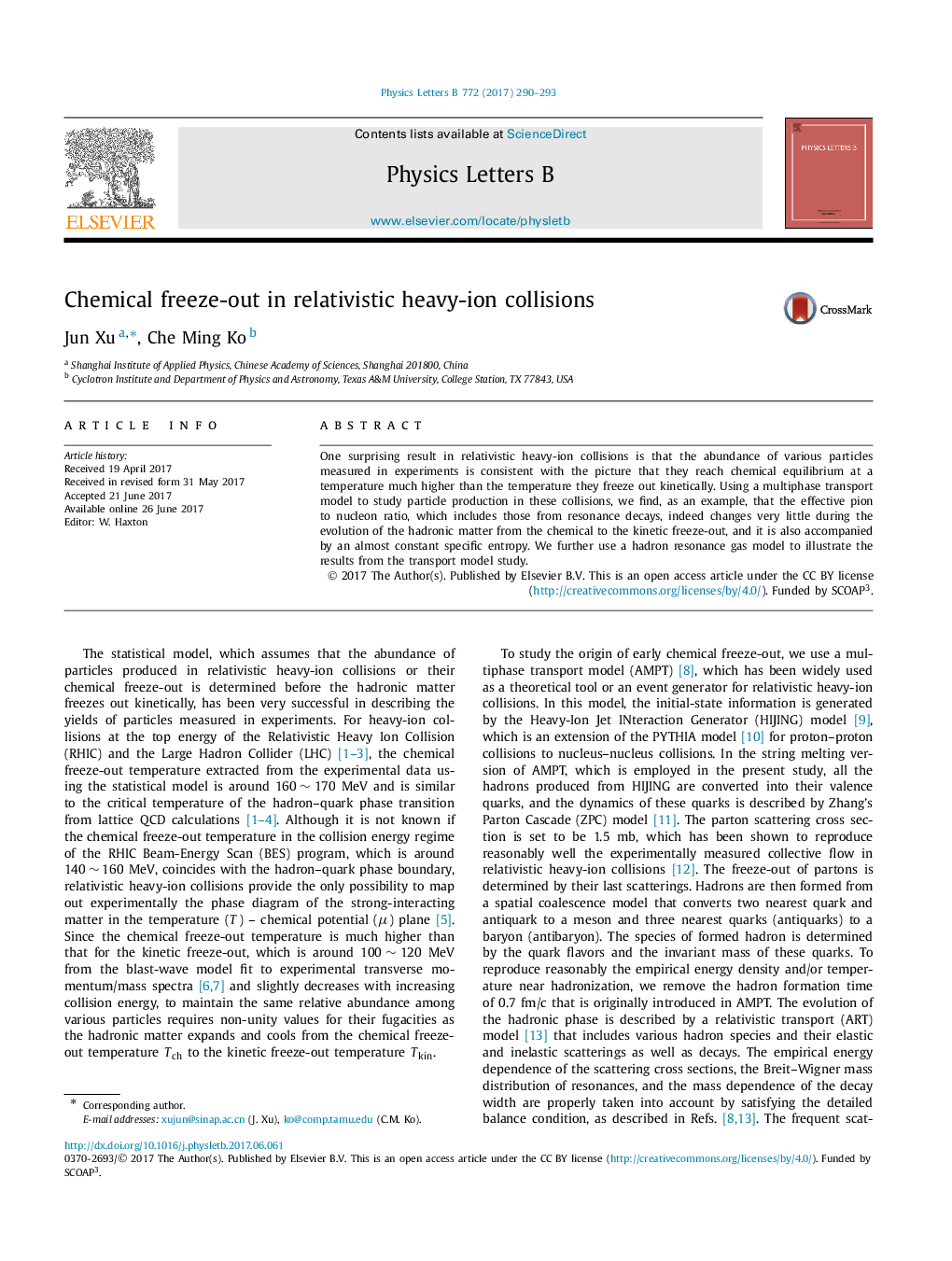| Article ID | Journal | Published Year | Pages | File Type |
|---|---|---|---|---|
| 5494728 | Physics Letters B | 2017 | 4 Pages |
Abstract
One surprising result in relativistic heavy-ion collisions is that the abundance of various particles measured in experiments is consistent with the picture that they reach chemical equilibrium at a temperature much higher than the temperature they freeze out kinetically. Using a multiphase transport model to study particle production in these collisions, we find, as an example, that the effective pion to nucleon ratio, which includes those from resonance decays, indeed changes very little during the evolution of the hadronic matter from the chemical to the kinetic freeze-out, and it is also accompanied by an almost constant specific entropy. We further use a hadron resonance gas model to illustrate the results from the transport model study.
Related Topics
Physical Sciences and Engineering
Physics and Astronomy
Nuclear and High Energy Physics
Authors
Jun Xu, Che Ming Ko,
